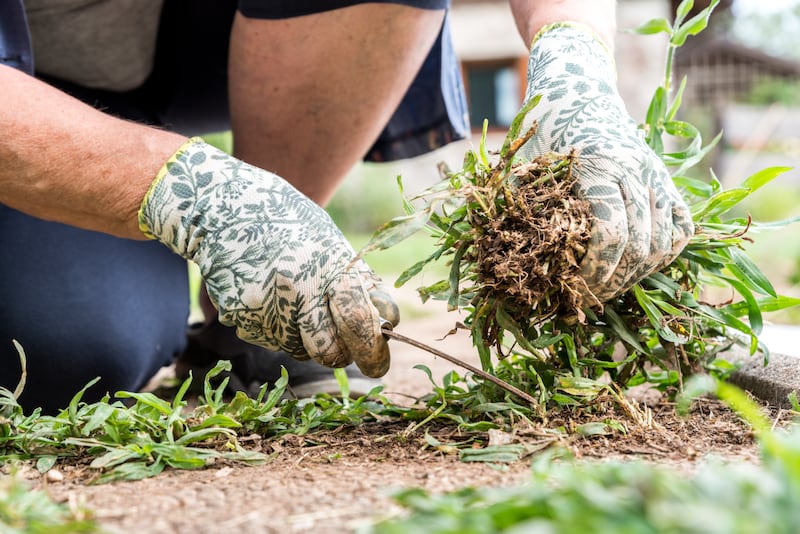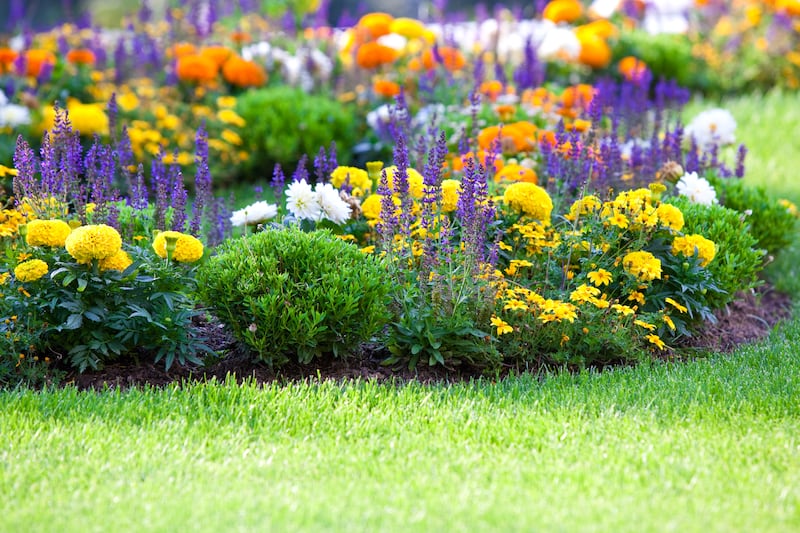Let’s talk about cardboard for a moment. More specifically, cardboard boxes.
At least several of these have winged their way to you over the last few weeks as packaging that came with online purchases, a reflection of our modern shopping habits. According to a recent fascinating New York Times article about the world’s dependence on these mass-produced, multipurpose, ubiquitous objects, it’s estimated that in 2021 alone Amazon shipped 7.7 billion packages, while in 2020 the world’s paper and cardboard factories produced an estimated 400-million-plus metric tons of product.
Strange as it might sound, for gardeners this is good news. Free, widely available, easily transported, light to handle and ultra-versatile, cardboard (so long as it’s what’s known as clean cardboard, see below) is one of the most cost-effective, labour-efficient, nature-friendly, biodegradable solutions to weed-control available to us. Lay those boxes down flat on to a lawn or weedy ground and then cover them with a 15cm layer of good quality compost or top soil, for example, and you have yourself an instant, ready-to plant raised bed. By the time those young plants root systems are properly stretching downwards, the cardboard layer will already be beginning to naturally break down, while the weeds beneath it will have mostly died off.
Similarly, place damp cardboard sheets down flat on the ground around the trunks of recently planted young trees or hedging (just make sure they don’t actually touch the stems to prevent problems with disease), then cover them with a light layer of grass clippings, compost or seasoned woodchips (not to be confused with bark mulch), and they’ll effectively act as a weed-suppressant that helps to protect young plants while they’re still small and vulnerable. Or spread them on the ground between vegetable or flower beds and cover them with a light layer of seasoned woodchips and they’ll protect the soil structure and suppress weed germination while acting as a serviceable path.
READ MORE

In my own new-old country garden, I’m using flattened cardboard boxes as an organically acceptable alternative to chemical herbicides to smother weedy growth along its boundary fences, in preparation for planting a range of nature-friendly hedges next autumn. Throughout the coming months, I’ll top up these layers of cardboard several times as they naturally rot down, to ensure they remain effective long enough to kill the perennial scutch grass, covering each cardboard layer with a light mulch of grass clippings. Later this spring, I’ll also be using flattened cardboard boxes (generously overlapped) for the bases of a series of no-dig cut-flower beds, a method popularised in recent years by the British gardener, author and no-dig proponent Charles Dowding (charlesdowding.co.uk).
Its proven weed-smothering qualities aside, cardboard can perform other valuable functions in a garden. Rich in carbon, for example, as it rots down it begins to boost soil microbial activity. Shredded into small pieces and added to the heap, cardboard also speeds up the composting process by balancing the carbon-nitrogen ratio. That all-important carbon-nitrogen balance, by the way, is the difference between a soggy, foul-smelling anaerobic compost heap and one that rots down quickly, efficiently and aerobically.
[ Your gardening questions answered: How do I prune a hydrangea?Opens in new window ]
All this said, there are gardeners who oppose cardboard’s use in the garden or allotment, arguing that there are valid environmental concerns as regards the sustainability of a product made from trees, a crop that uses land, consumes nutrients and water, and which requires energy to be harvested, transported and processed. Which is to say nothing of the energy-intensive processes then used in cardboard’s manufacturing. All of which I’d agree with wholeheartedly. But I’d also argue that by being used in a garden or allotment, then at least these boxes are being returned to the soil food web rather than going to landfill or being recycled to make yet more paper products.
Others point out that not all cardboard boxes are equal in terms of their suitability for use in the garden or allotment in the ways outlined above. For example, some boxes are covered with a transparent waxy or plastic coating that makes them more waterproof, while others are decorated with plastic labels and/or colourful printed graphics using chemical inks, all of which can potentially leave toxic residues in the soil. This is undoubtedly true, which is why it’s important to use only uncoated, plain brown boxes – also known as clean cardboard. Made from wood pulp held together with natural plant-based starch, this kind of cardboard isn’t going to leave any damaging residues and will break down naturally over a couple of months.
Is it the environmentally perfect solution to managing weeds in your garden? No, not quite, but as someone who’s reluctantly come to the conclusion that there’s no such thing, I’m okay with that.

Tips on using cardboard in your garden or allotment
Use uncoated, undecorated, plain brown cardboard boxes- as large as possible for ease of use- and with the packaging tape removed. Avoid using shiny, plastic-coated or waxy coated card or cardboard as these are likely to contain environmentally unfriendly chemicals. Avoid using bleached, printed or colourful card or cardboard for the same reason.
Before using them in your garden or allotment, leave cardboard boxes out in the rain or gently hose them down to make them slightly soggy to more easily remove any plastic packaging tape. This also makes them easier to fit into a given space.
Before spreading cardboard on the ground, make sure to cut back any weedy growth to ground level (a scythe or strimmer is perfect for this task). But bear in mind that cardboard won’t suppress the growth of established woody plants so you’ll need to tackle these first by digging out their root systems.
Make sure to overlap the flattened boxes generously on the ground as small gaps can allow young weeds to gain a foothold. If perennial weedy growth is bad, use a couple of layers of cardboard.
Don’t leave cardboard sheeting unsecured on the ground as it will be blown around your garden or allotment on the next windy day. If you want to use it as a weed suppressant but don’t initially have a suitable mulch to top-dress it, damp it down and then weigh it down with some stones or planks of wood until you do.
If you’re planning on using cardboard for the base of a raised bed, then sourcing a sufficient quantity of good-quality compost or top soil is crucial. Recommended Irish suppliers include mulch.ie and envirogardenandhome.com as well as landscapedepot.ie
This week in the garden
Chit potato tubers to spur them into early growth and get them off to a good start. First-early and second-early varieties of potato particular benefit from chatting. To do this, place your seed potatoes in a wide shallow tray or cardboard egg boxes in a bright, cool but frost-free space with the “rose end” up (the end with the dormant buds). Within three-six weeks you’ll see the young shoots starting to emerge. Along with most good Irish garden centres, the following recommended suppliers carry a very good range of seed potatoes: mrmiddleton.com; fruithillfarm.com; and quickcrop.ie
Some kinds of ornamental grasses should be cut back hard at this time of year to encourage lots of healthy new growth and to keep them in shape. Examples include varieties of deschampsia and calamagrostis. Species of cortaderia should be also cut back hard at this time of year to just above any emerging new growth. But hold off pruning species of miscanthus and pennisetum until late March/April.
Dates for your diary
Saturday-Sunday February 18th and 19th, Mount Venus Nursery, Walled Garden, Mutton Lane, Rathfarnham, Dublin 16, Hellebore Weekend, with a wide range of cultivars and selections for sale, see mountvenusnursery.com
Saturday, February 25th (8am-5.30am), Crowne Plaza Dublin Airport Hotel Conference Centre, Northwood Park, Santry, Co Dublin, the 2023 GLDA seminar ‘Letting Nature In’, pre-booking essential, tickets from glda.ie (€35-€125)
Sunday, February 26th (10am-6pm), Killruddery House & Gardens, Bray, County Wicklow, “How to Grow Your Own Cut Flowers Seasonally and Sustainably,” a one-day hands-on workshop with the garden writer, horticulturist and flower-farmer-florist Fionnuala Fallon, pre-booking essential, see killruddery.com














